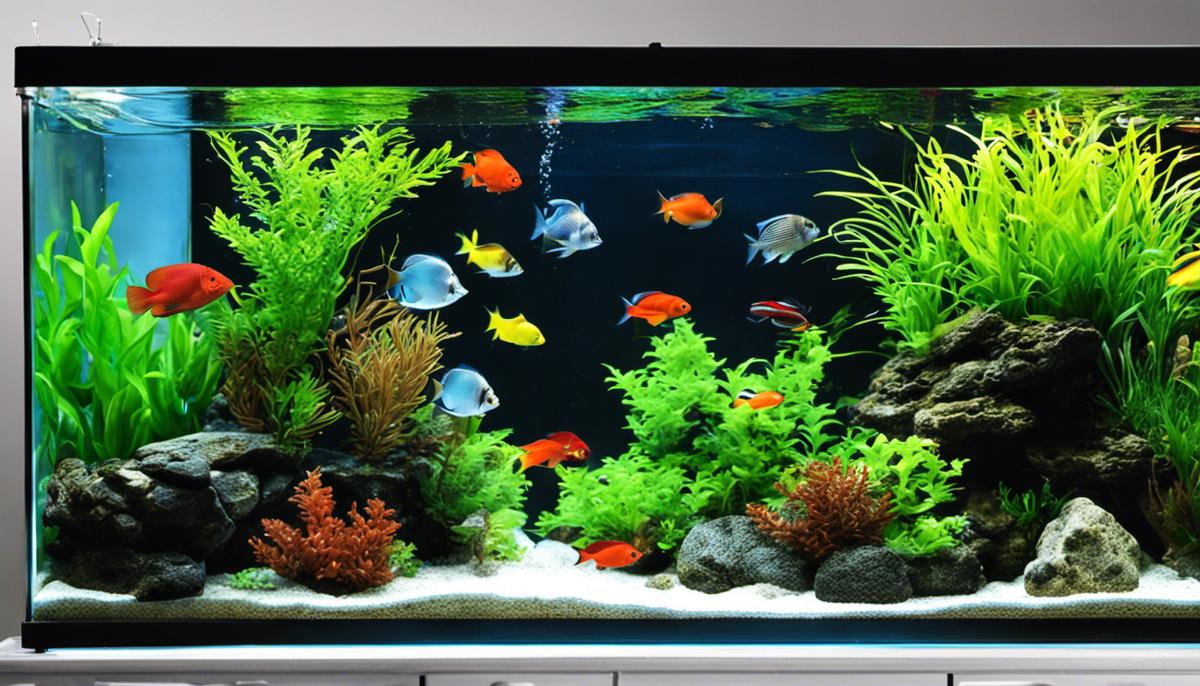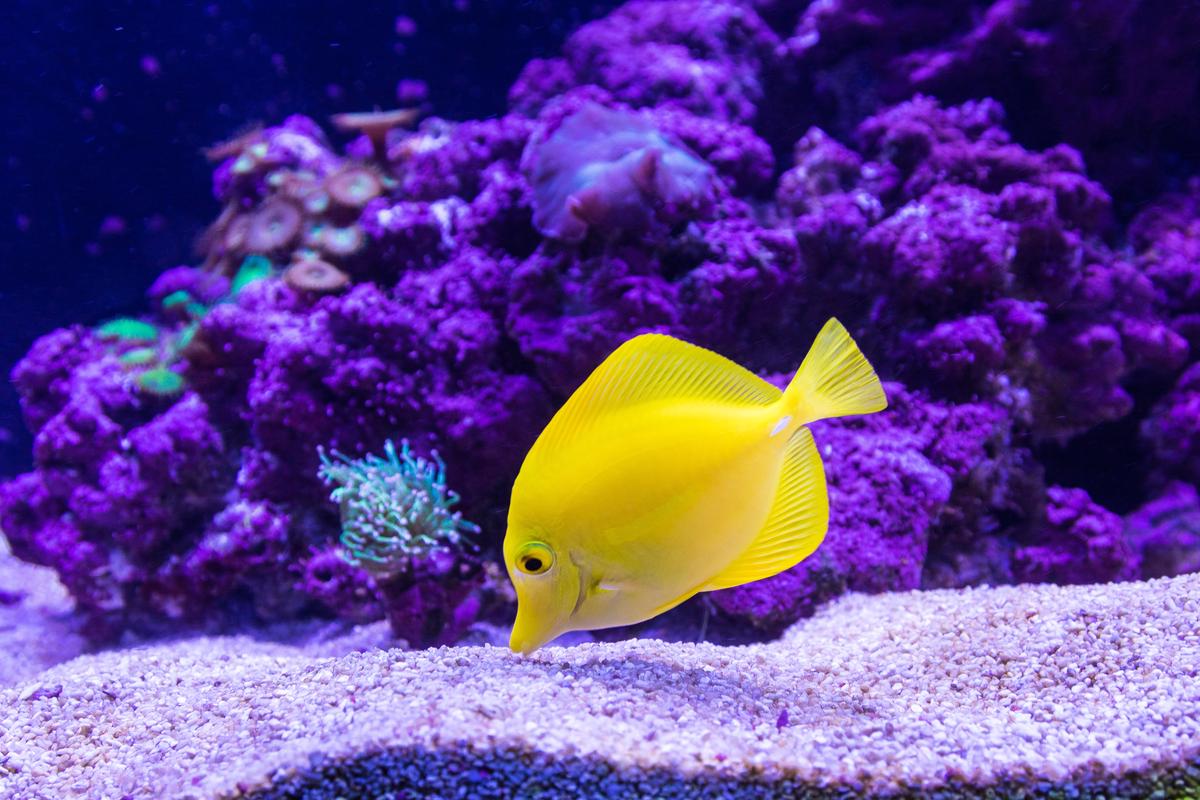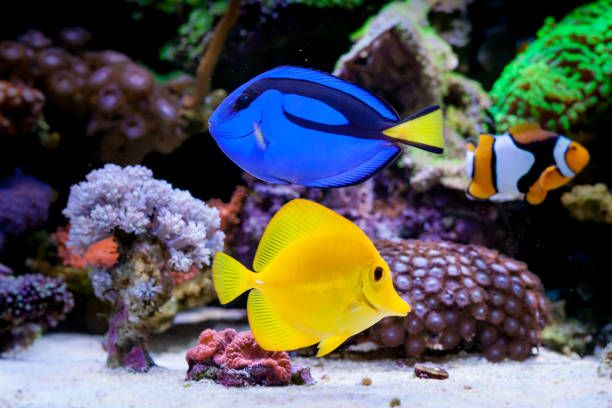Embarking on the journey of setting up an aquarium can be an exciting yet daunting endeavor. This satisfying pastime brings about the beauty of nature right in the comfort of your home, offering a sense of tranquility. As an aquarium owner, understanding the intricacies of the aquarium ecosystem becomes crucial for the survival and thriving of its subordinates. This comprehensive guide taps into important aspects of the aquarium setup, such as understanding the balance of organisms, selecting suitable equipment, and mastering the art of aquarium maintenance. It unravels the intricacies of the nitrogen cycle, the influence of pH levels, temperature, and other pivotal facets that impact the aquarium’s health.
Understanding the Aquarium Ecosystem
Understanding the Aquarium Ecosystem
An aquarium is a delicate ecosystem that relies on the complex interplay of biological, chemical, and physical elements. At its simplest, an aquarium ecosystem consists of fish, plants, bacteria, water, and nonliving elements like rocks or artificial structures. Each unit in the ecosystem plays a crucial role, with slightly different functions depending on the type of aquarium. For instance, in a freshwater ecosystem, fish consume plant material and produce waste that is broken down by bacteria, which in turn feed plants.
Role of Fish in the Aquarium Ecosystem
Fish are the most visible members of the aquarium ecosystem. They not only add color and movement to the aquarium, but also contribute to maintaining the balance of the ecosystem. Fish consume food and excrete waste, which eventually break down into nutrients that help feed the plants and beneficial bacteria in the tank.
Role of Plants in the Aquarium Ecosystem
Aquatic plants in an aquarium provide many beneficial roles. They absorb the waste products from fish and use the nutrients to grow. Besides, they help maintain oxygen levels in the tank by photosynthesis, are a food source for some organisms, and provide shelter for aquatic life.
The Nitrogen Cycle in the Aquarium Ecosystem
One of the most critical processes in the aquarium is the nitrogen cycle. Fish excrete waste and leftover food decays in the water, producing ammonia, which is toxic for fish. Thankfully, beneficial bacteria, known as nitrifying bacteria, convert this ammonia into nitrite (also toxic), and then into nontoxic nitrate. This cycle helps maintain a healthy environment for fish.
Maintaining the Right pH Levels
Keeping a balanced pH level in your aquarium is crucial for the health of your ecosystem. Different species of fish and plants prefer different levels of pH. However, a neutral pH level of 7 is generally safe for most freshwater fish, while saltwater fish often require slightly alkaline conditions. It’s important to regularly test and adjust pH levels to prevent the water from becoming too acidic or too alkaline.
Importance of Water Temperature
Different species of fish thrive in different water temperatures. Tropical fish, for instance, prefer warm temperatures around 72-80°F, while cold-water fish require lower temperatures. An appropriately-rated aquarium heater can help maintain a stable temperature. Fluctuations in temperature can stress fish, possibly leading to disease or even death.
In conclusion, understanding and maintaining the balance within an aquarium ecosystem is essential. It requires careful consideration of the organisms within the tank and their requirements, close monitoring of water conditions, and an understanding of critical factors such as the nitrogen cycle. By paying attention to these components, one can create a prosperous and healthy aquarium.

Choosing the Right Equipment
Understanding the Appropriate Aquarium Size
The first essential factor to consider for a home aquarium setup is selecting the right size of the aquarium. The size depends on the number of fish you plan to keep, their size, and their species. Generally, a larger aquarium is preferred for beginners, as it provides a more stable environment. It helps maintain a healthy level of temperature and chemical balance that is easier to manage compared to a small tank.
A common rule for determining the correct aquarium size is to provide at least one gallon of water for every inch of fish. However, consider the adult size of the fish rather than its size when purchased.
Choosing the Right Filtration System
Next, choose an appropriate filtration system for your aquarium. The filtration system keeps the water clean and free from harmful chemicals, keeping your fish healthy. It also removes excess food and the waste produced by the fish. There are three types of filtration: mechanical, chemical, and biological.
Mechanical filtration removes visible waste substances. Chemical filtration uses activated charcoal or other chemicals to eliminate dissolved particles from water. Biological filtration, crucial for an aquarium’s ecosystem, removes harmful ammonia and nitrites produced by fish waste.
There are different types of filters available like Undergravel filters, Internal filters, Hang-on-back filters, Canister filters, and Sponge filters. Based on your aquarium size and the number of fish, an appropriate filter could be selected.
Importance of a Heater
The temperature of the water is an essential factor for your fish’s survival. Many fish species require a stable and warm temperature. Hence, a heater is a crucial part of an aquarium setup. An adjustable heater is more beneficial as it enables you to control, maintain and adjust the temperature as needed.
Aquarium Lighting and Its Effects
Lighting serves a two-fold purpose in an aquarium. It illuminates the tank for viewing pleasure and helps live plants in the tank to photosynthesize. Most aquariums come with standard fluorescent fixtures, which are typically adequate. However, for tanks with a more significant number of live plants or coral, more specific lighting may be required.
Additional Necessary Equipment
Other necessary equipment includes a thermometer for monitoring the water temperature and an air pump to improve water circulation and increase oxygen level in the water. A water test kit is also crucial to keep a regular check on the water’s pH, nitrate, and ammonia levels in your tank.
Maintaining Aquarium Equipment
Regular maintenance of all these equipment is essential for their longevity and efficient performance. Rinse the filter in the tank water and avoid tap water since it could kill beneficial bacteria. Clean the heater and lighting fixtures with a soft cloth to avoid hard water build-up. Test the heater and thermometer regularly for correct temperature readings and recalibrate or replace if needed. Regular checks on the air pump are also essential for its smooth functioning.
Remember, a well-maintained set of equipment not only benefits the health and environments of your fish but also the aesthetic pleasure of your aquarium.

Aquarium Setup and Maintenance
Step 1: Gather Essential Equipment
To start setting up your aquarium, gather all the necessary equipment. This includes the tank or aquarium, filter, heater, lighting system, water conditioner, thermometer, and net. You’ll also need decoration pieces such as artificial plants, stones, pebbles, and an appropriate substrate. Test kits for checking pH, nitrate, nitrite, and ammonia levels in the water are also advisable.
Step 2: Choosing and Placing the Tank
Choose a suitable location for your aquarium. Avoid close proximity to windows, heating appliances, and air conditioners as these can cause significant temperature fluctuations. Once the desired location is chosen, clean your aquarium thoroughly with hot water, but avoid using any chemicals. Install the aquarium on a stable surface ensuring a flat and level base.
Step 3: Adding Substrate
Add substrate to the bottom of the aquarium. Rinse it thoroughly before using it to remove dust and other fine particles. Substrate is usually layered about two inches deep, although you can create a slope for added visual effect. It serves as a habitat for beneficial bacteria and provides a rooting medium for live plants.
Step 4: Placing Decorations
Begin adding decorations like artificial plants, stones, or bogwood. Make sure these are cleaned well before placement. Also, ensure that these decorations won’t harm the fish. Sharp edges need to be avoided because some fish like to hide and might cut themselves.
Step 5: Installing Equipment
Now, it’s time to install the equipment. Set up the heater and filter as per the manufacturer’s instructions. Make sure to position the heater near the water’s flow for even heat distribution. Install the thermometer in a location easily viewable from outside the tank.
Step 6: Filling the Tank
Before adding water to the tank, place a clean dish on the substrate to avoid disturbing it. Slowly fill the tank using de-chlorinated water or use a water conditioner as per its instructions. Fill the tank up to about an inch from the top.
Step 7: Starting Up the System
Turn on your filter, heater, and lighting system once the tank is filled. Make sure all equipment is running properly. At this stage, adjust the heater to the correct temperature for the type of fish you intend to keep.
Step 8: Cycling the Tank
Before introducing any fish, you need to cycle the tank. This means allowing the nitrogen cycle to establish itself, converting harmful ammonia and nitrites into less harmful nitrates. This process takes 2-6 weeks, during which you need to monitor levels of ammonia, nitrites, and nitrates regularly.
Step 9: Introducing the Fish
Once the tank is fully cycled, you can start introducing your fish. Add them gradually and monitor their behavior closely, especially for signs of stress or disease. Also, do not overstock the aquarium; fish need sufficient space to grow and thrive.
Aquarium Maintenance
Regularly check the water parameters to ensure they are appropriate for your fish. Change about 10-15% of the water each week. Clean the filter without fully replacing it as it holds essential bacteria for the nitrogen cycle. Monitor your fish’s health daily and keep an eye for signs of disease. Lastly, don’t overfeed your fish, as uneaten food will decompose quickly and deteriorate the water quality.
Following these steps will set up and maintain a healthy and thriving aquarium environment for your aquatic pets.

Photo by craigology on Unsplash
With knowledge comes power, and understanding the complexities of an aquarium ecosystem certainly gives you the upper hand in this fascinating endeavor. Once you’ve grasped the essentials of the aquarium ecosystem and the relevance of each organism within it, along with the right selection of equipment and their maintenance, you are indeed poised for success in setting up and maintaining a thriving aquarium. Aquarium-keeping is truly a rewarding hobby, reinforcing our bond with nature and fostering an appreciation for aquatic life. Here’s wishing you a splendid journey of creating your very own flourishing aquatic world.
ChasingNemo.com is a participant in the Amazon Services LLC Some of the links in our posts are affiliate links. Click Here For Full Disclosure.







